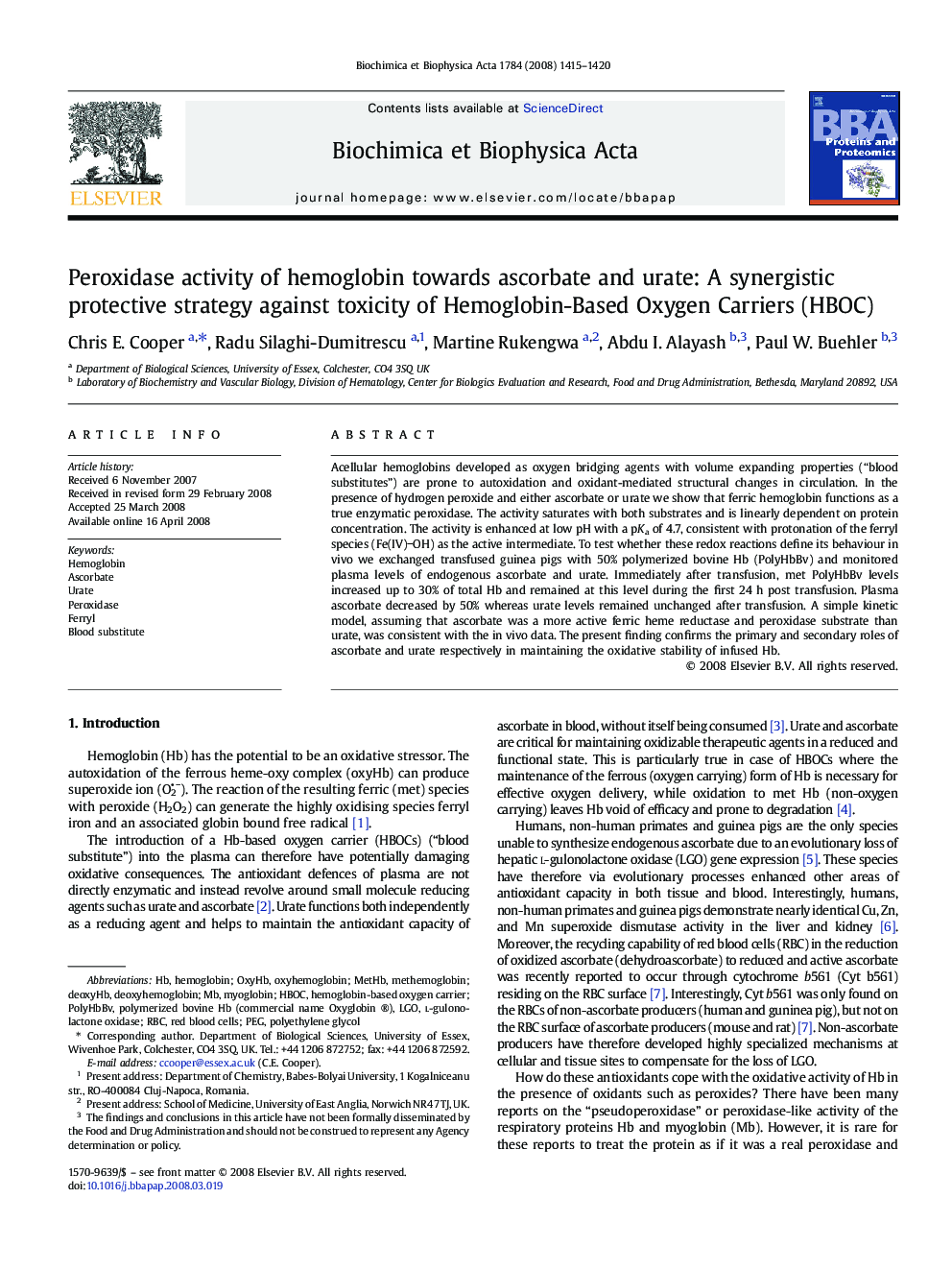| Article ID | Journal | Published Year | Pages | File Type |
|---|---|---|---|---|
| 1179041 | Biochimica et Biophysica Acta (BBA) - Proteins and Proteomics | 2008 | 6 Pages |
Acellular hemoglobins developed as oxygen bridging agents with volume expanding properties (“blood substitutes”) are prone to autoxidation and oxidant-mediated structural changes in circulation. In the presence of hydrogen peroxide and either ascorbate or urate we show that ferric hemoglobin functions as a true enzymatic peroxidase. The activity saturates with both substrates and is linearly dependent on protein concentration. The activity is enhanced at low pH with a pKa of 4.7, consistent with protonation of the ferryl species (Fe(IV)−OH) as the active intermediate. To test whether these redox reactions define its behaviour in vivo we exchanged transfused guinea pigs with 50% polymerized bovine Hb (PolyHbBv) and monitored plasma levels of endogenous ascorbate and urate. Immediately after transfusion, met PolyHbBv levels increased up to 30% of total Hb and remained at this level during the first 24 h post transfusion. Plasma ascorbate decreased by 50% whereas urate levels remained unchanged after transfusion. A simple kinetic model, assuming that ascorbate was a more active ferric heme reductase and peroxidase substrate than urate, was consistent with the in vivo data. The present finding confirms the primary and secondary roles of ascorbate and urate respectively in maintaining the oxidative stability of infused Hb.
